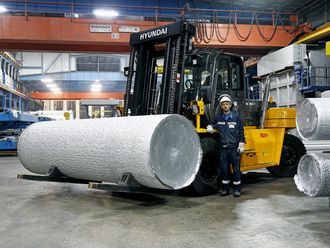Dubai: Robust demand for jewellery was a trend not unique to Dubai during the first quarter of the year. In dollar terms, their sales worked out to a stellar $16.8 billion (Dh61.6 billion), 75 per cent higher than in the first three months of 2009, according to recently released data from World Gold Council (WGC).
In volume terms, this works out to 407.7 tonnes from a 43 per cent increase year-on-year. Even if one were to make allowances for a particularly anaemic retail demand in 2009, the latest numbers show there is a lot of in-built resilience among consumers to recent price gains.
"With the exception of Japan, growth was driven exclusively by non-western markets, where consumers appeared to have adjusted their price expectations in the face of a 22 per cent rise in gold price since the first quarter of 2009 (comparing average quarterly prices from first quarter 2009 and first quarter 2010)," the report said.
"The anticipation of higher future gold prices therefore encouraged consumers in these markets to make gold jewellery purchases during the first quarter as the price corrected back from the December peak."
UAE gold demand rose to 18.9 tonnes in the first quarter from 14.6 tonnes a year before, which was indicative of improved consumer confidence and greater acceptance of higher prices among consumers.
Saudi Arabia too turned in a solid performance with sales up more than 25 per cent. But the biggest gains were reserved for India through a staggering 291 per cent year-on-year gain to 147.5 tonnes. It shows a welcome return to form for the country's insatiable interest in the metal after sales volumes topped a meagre 37.7 tonnes in the first quarter of 2009.
"Excluding India from the total gives a somewhat different picture, with jewellery demand up a more modest 11 per cent, from 291.6 tonnes to 323.3 tonnes," the report said. "The local currency value of first quarter Indian jewellery demand, at Rs241 billion, was 339 per cent higher than first quarter 2009. "
Global trends
- In the West, jewellery off-take in the first quarter of 2010 declined as higher prices encouraged a switch to alternative products. Although some retailers in the US reported some gains in sales, consumers remained constrained by high gold prices, which encouraged a shift to combined gold/silver product. Similar trends were seen in Europe.
- Italian consumers continue to substitute gold with high-designed silver or costume jewellery alternatives.
- Chinese jewellery off-take increased 11 per cent to breach the 100-tonne mark, as demand was lifted by the Chinese New Year holiday — a peak gifting season — and strong domestic economic growth. The increase in demand was concentrated in the pure 24-carat gold segment of the market, particularly — although not exclusively — in the major cities, where demand for 18 carat-gold slipped somewhat as winter is the low season for 18 carat gold jewellery.












